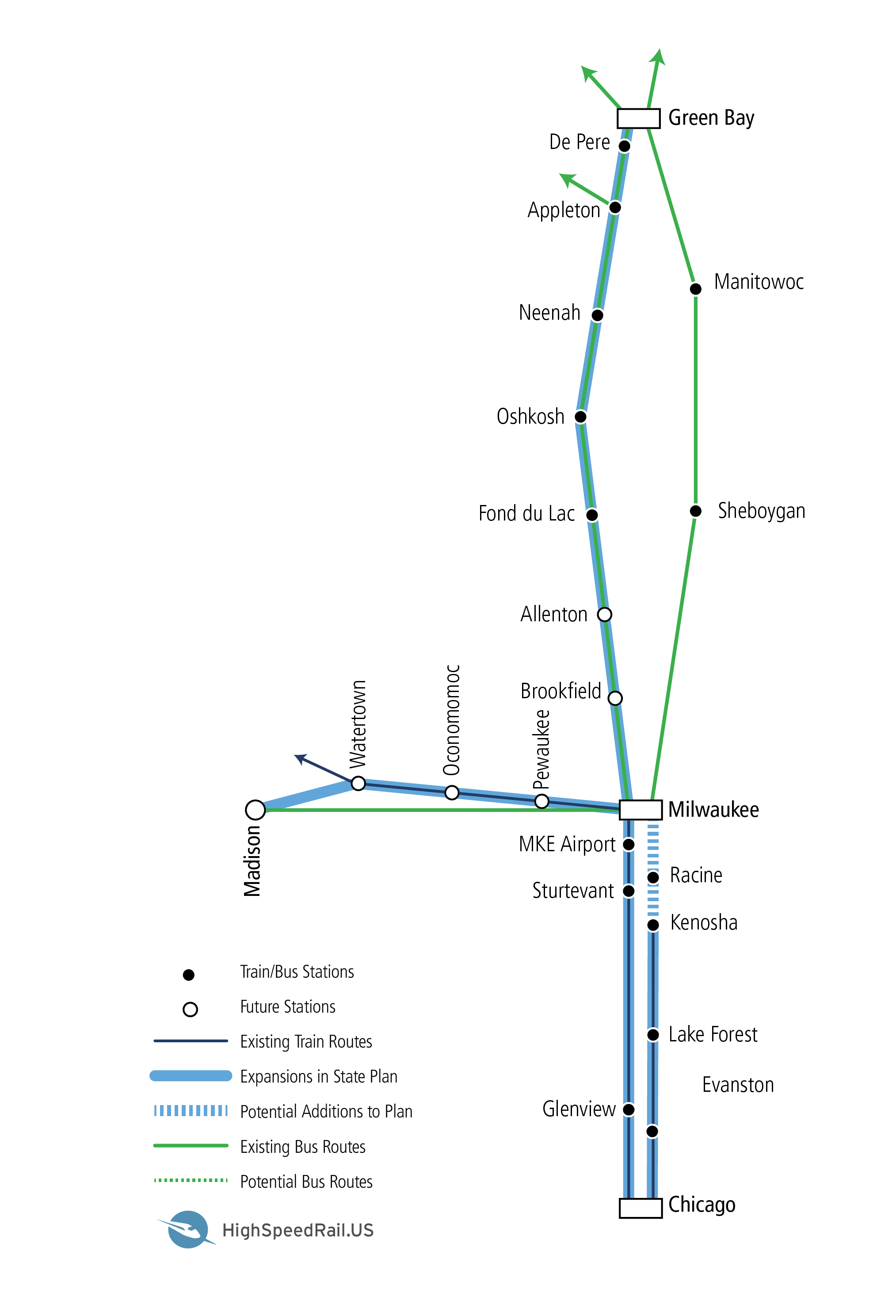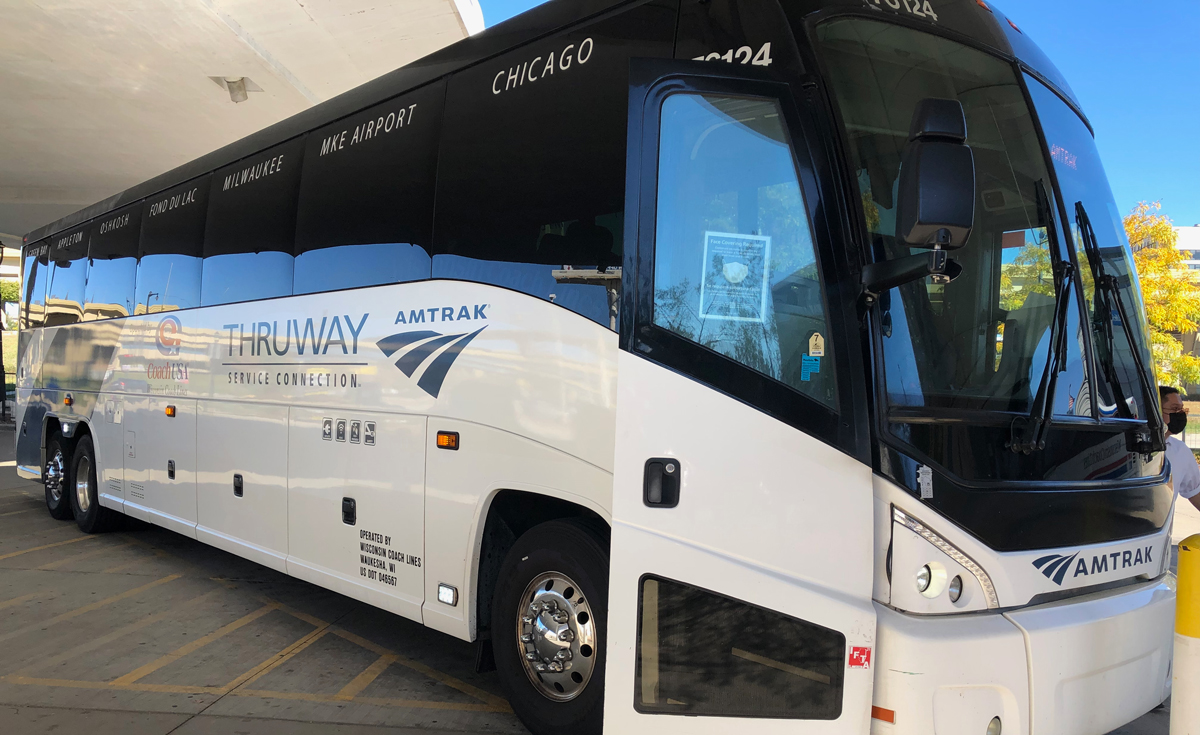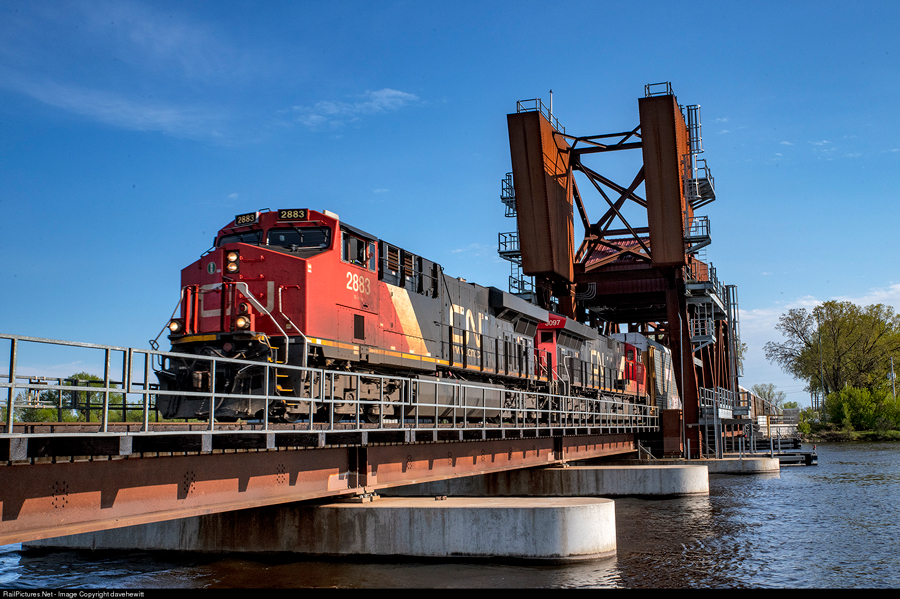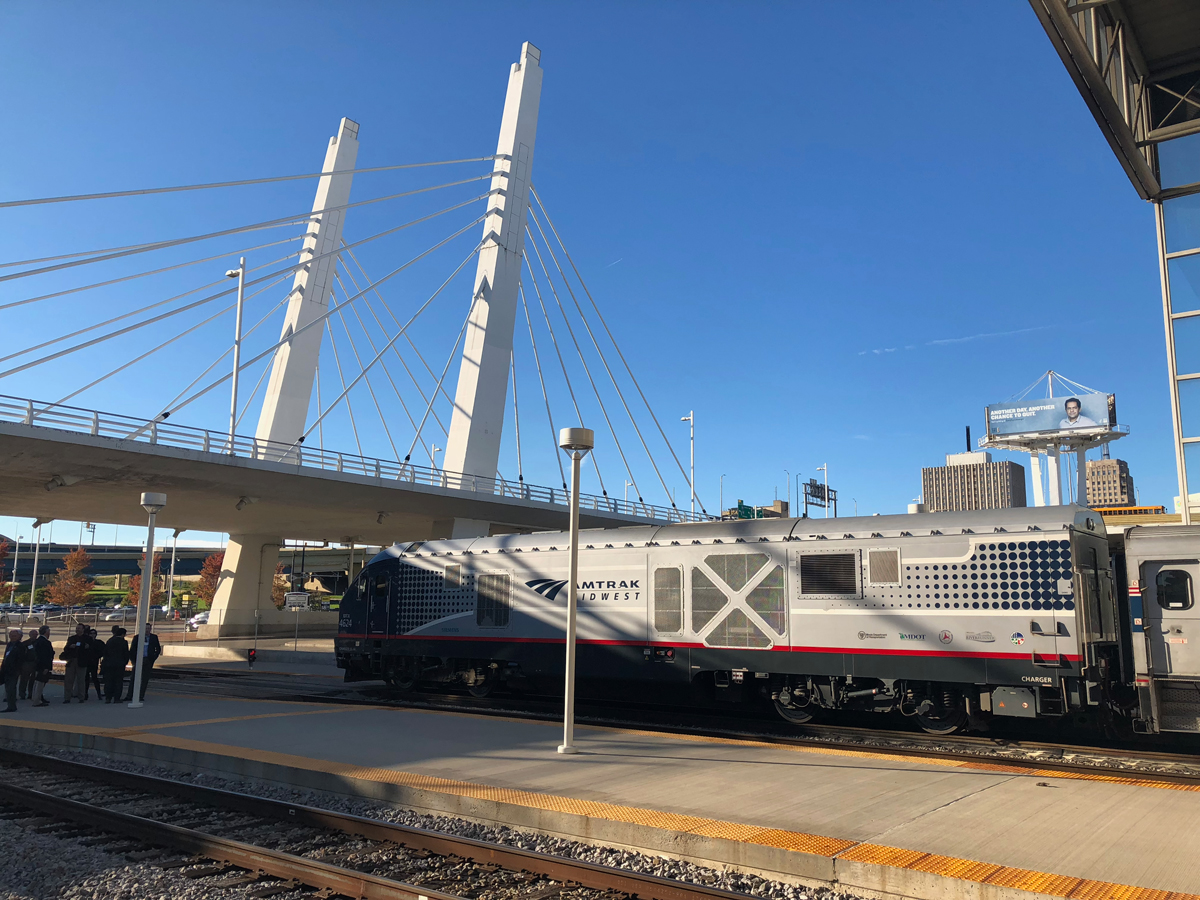Getting Started
How to get started: 3 steps
In football, not capitalizing on opportunities is called leaving points on the field.
Wisconsin is leaving a lot of points on the field right now. But we can change that.
Step 1: Run more frequent buses asap
Step 2: Approach Canadian National as a valued partner
Step 3: Extend the successful Hiawatha
Connecting Green Bay to Chicago, Madison and more
Green Bay needs fast, frequent trains to Madison, Milwaukee and Chicago. Why?
An upgraded passenger rail line will increase flows of trade and innovation between economies that are vital to Wisconsin’s health.
It will be dramatically safer, since intercity passenger rail results in far fewer fatalities than automobile travel, per passenger mile. That’s especially relevant during football season, when alcohol-impaired driving is a problem.
It will reduce carbon emissions. A recent study showed that passenger rail systems use one-third less energy, per passenger-mile, than automobiles in the U.S.
And it will be the first step in creating a railroad network that connects and transforms the whole state.

Step 1: Add more bus departures and make through ticketing easier.
Green Bay – Milwaukee segment has several daily buses a day to Milwaukee, where travelers can connect to trains to Chicago or buses to Madison. Many of the station pairs can be reached with one ticket through Amtrak.com.
But, the schedules are focused on going to or from Chicago.
The State should make it attractive to use the network at all points along the way. That would mean:
- Morning, afternoon and evening departures in each direction.
- Better timed connections at Milwaukee in all directions.
- Making sure people know how to buy tickets.

WisDOT funds several buses daily buses connecting Green Bay and intermediate cities to Milwaukee. photo: Rick Harnish

A CN freight train crossing the Fox River in Oshkosh. photo: Dave Hewitt
Step 2: Approach Canadian National as a Valued Partner
The Governor’s office should engage the owner of the tracks, Canadian National Railway, as a true partner in creating high-frequency train service between Green Bay and Milwaukee.
Upgraded tracks for the passenger trains could also improve freight access to northeastern Wisconsin, reducing semi traffic on already congested highways.
The state should request a proposal from Canadian National for operating at least five daily round trips at 79 mph and 90 mph, with flexibility regarding the operator (i.e., Amtrak or a private company).
A feasibility study was completed in 2004 for the Wisconsin Department of Transportation.
The study looked at two options: A 79-mph option adding frequent sidings to a largely single-track mainline and adding a 110-mph passenger-only track alongside CN’s freight track between Duplainville and Appleton.
The State should explore a third option: Adding a second mixed-use mainline for most of the distance to Green Bay—with speeds no greater than 90 mph.
Step 3: Extend the successful Hiawatha service
In 2014, the Wisconsin Department of Transportation (WisDOT) set a goal of increasing the Hiawatha’s daily round trips from 7 to 10, with eventual expansion to 17.
Roughly one-third of Hiawatha trains would be extended to Green Bay, the other two-thirds to Madison.
Then, it would be possible to take the train from Green Bay to Madison, with a connection at Milwaukee.
That goal should be reaffirmed and prioritized.

Fund a long-term network plan
The state should also update the Wisconsin Rail Plan 2030 by incorporating a big-picture vision for its railroad network.
The current document is a great foundation. Now it’s vital to add a section that is strategic, savvy, and forward-thinking about how each element will improve the whole network. In California’s transportation plan, this section is called the “network integration vision.” An integrated and well-coordinated network delivers tangible benefits to both long-distance riders and local transit systems. In the process, it builds momentum and creates a virtuous cycle. The more it expands, the more useful it becomes. The denser and more useful it is, the more support there is for train service and local transit.
Taking these steps will take political will, no doubt. But they’re very doable.
The strong grassroots demand for more trains in Wisconsin means that the wind is at our back on this. All that’s needed is for us to recognize this moment for what it is: An opportunity to build on our past, invest in our future, capitalize on our strengths—and stop leaving points on the field.
